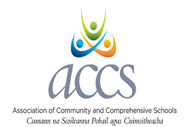Project Based Learning (PBL)
Problem Based Learning (PBL)
John the Baptist Community School continues to explore ways and approached to deepen students learning while at the same time to provide a foundation for lifelong learning. In 2015-2016 six teachers worked with TY students in a learning process called Problem Based Learning (PBL).
The pillars of PBL may be summarised as follows: (1) a problem is presented to a group of students, who, in small groups, organise their ideas, evaluate it and define its nature and try to solve it with available knowledge; (2) then students discuss the problem and identify aspects of it that need clarification and research; (3) students prioritise the key issues and plan when, who, where and how these issues will be investigated and researched’; (4) when students meet again they share and explore the knowledge gathered about their learning and use it to propose an informed solution to the problem; (5) after finishing work with the problem the students assess themselves, and present their solution or findings to others.
In spite of its apparent simplicity, the evidence is that the levels of learning and understanding are much greater than in individual study or the traditional class setting. Students are much more motivated as the problem is presented as a real situation. Thinking and inquiry based learning is highly developed as is the students ability to explain and articulate the issues involved. In 2016, the school engaged in a highly successful Project Based Learning module.
Our students were given the 1916 Proclamation and asked if and how this this historical document has any significance 100 years later to young people today. The students divided themselves into group identifying a number of themes having read the document together. They decided that they would present the document under a number of subject headings; historical, religious, statistical, geographical and cultural. Working in groups they researched the events leading up to, during and after the 1916 Rising. They discussed their findings and chose to present their results using an information hub. This included a wall display, a video, art display, 3D cityscape and artefact display.
Teachers monitored and facilitated the process ensuring that students were learning and developing skills such as research, group and team work, time management, writing skills and knowledge based learning. Through of cross-curricular discussions and approaches, students delved into the topic from a number of different viewpoints, creating a truly memorable display. In addition to a huge wooden timeline that stretched the length of the corridor, the staff and students of the school were treated to a fascinating display about the Rising, incorporating models, poetry, artwork, numerical calculations, statistical analysis etc.

